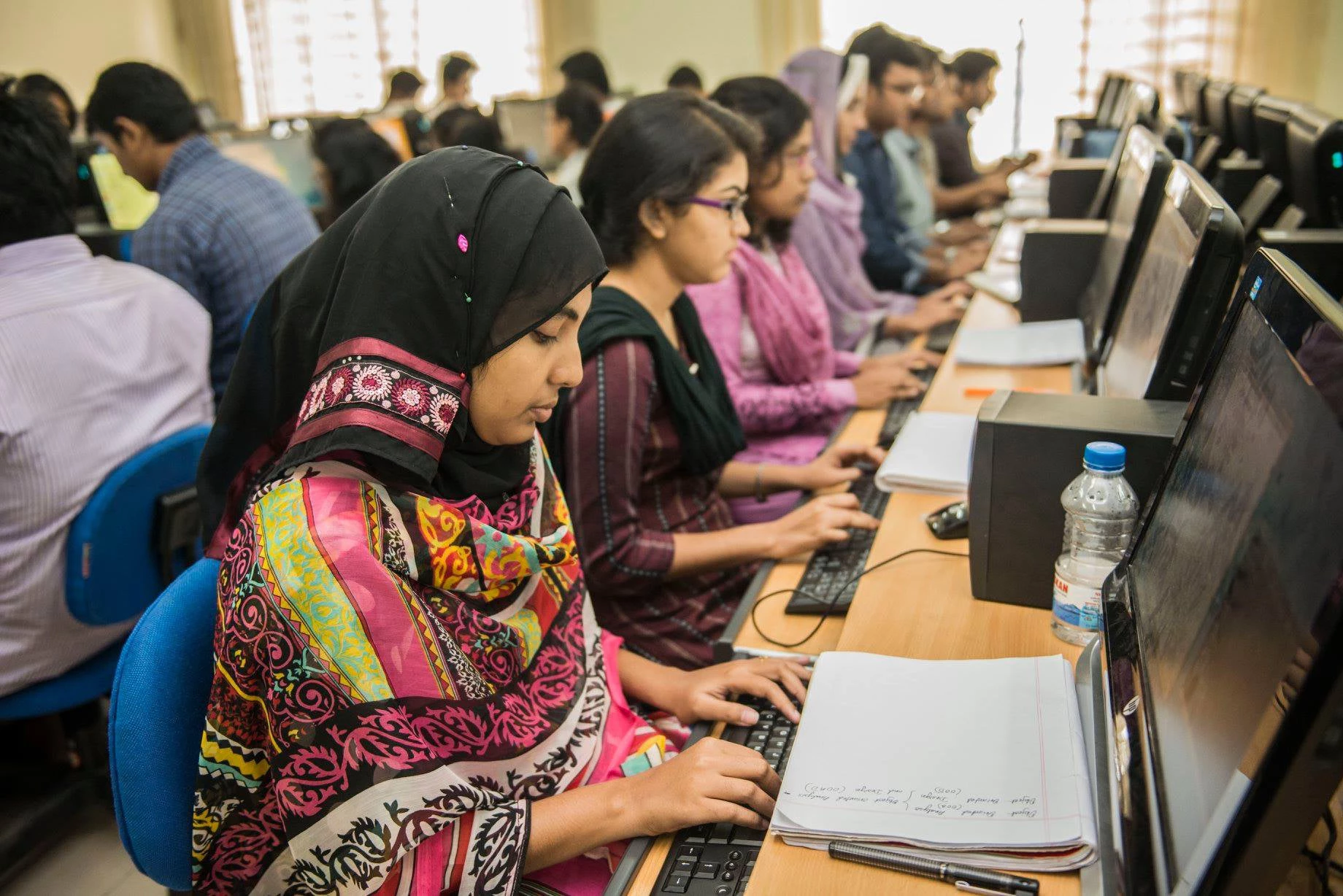South Asia has enjoyed a growth rate of 6 percent a year over the past 20 years. This has translated into declining poverty and improvements in health and education. While worthy of celebration as we mark International Women's Day, the success could have been more dramatic if more women worked for pay. Only 28 percent of women in South Asia have a job or are looking for one, compared to 79 percent of men. This is the second lowest in the world, after the Middle East and North Africa region at 21 percent.
With the largest working-age population and growing middle class, South Asia’s development potential is vast. But the lack of women in employment and economic participation reflects lost potential. In India and Sri Lanka, tens of millions of women have dropped out of the work force over the last twenty years.
Many factors are holding them back. Almost half of South Asia’s adult women are illiterate and its girls suffer from the highest malnutrition rates in the world. Rates of violence against women and maternal mortality remain among the highest in the world. All these factors translate into a labor market characterized by low participation, high unemployment and persistent wage gaps for women.
What can be done to better prepare and encourage women to participate in the work force? It starts with valuing our daughters as much as our sons – providing them with the same access to nutritious foods and investing in their education for them to reach their potential. Let’s spark the interest of young girls in subjects like science and mathematics, and convince them that they are just as capable as boys –that they too can build careers in engineering, scientific research, IT, and other fields that are in demand by employers. We must also raise our sons to respect girls and women, and make it clear that there is zero-tolerance for gender-based violence.
For its part, the World Bank’s work supports greater understanding of gender issues and promotes economic participation by women. Across South Asia, our programs support girls and boys to begin and complete their educations, help provide training relevant to employer demands, unlock access to finance and support for small businesses, foster the growth of self-help groups, and conduct research on what can be done to bridge the gap.
However, these interventions alone are insufficient, as research shows that even women that have completed skills programs and been placed in jobs tend to drop out in response to family pressures. Changing social norms around marriage, work and household duties will have to be part of the agenda.
It is an opportune time to reform outdated policies that deter women from entering or staying in the labor force. Fostering the creation of better jobs, providing support for child and elder care, and ensuring safe and affordable transportation can remove barriers for women to access employment.
In offices, improving child care services and access to part-time work and maternity leave would increase opportunities. India’s recent amendment to its Maternity Benefit Act extends paid maternity leave from 12 to 26 weeks and requires firms that employ more than 50 employees to provide child care facilities. Workplaces must embrace gender equity in labor legislation and non-discriminatory policies, including zero-tolerance for sexual harassment. The private sector should take a leading role in expanding women’s share of employment and firm ownership in emerging industries.
Women entrepreneurs could also be enabled to work out of their homes if they are provided with relevant training and access to credit and market links, which would allow them to start and grow successful businesses
There are indications that countries are actively trying to turn the trend around. Bangladesh for instance has managed to raise its female labor force participation by 10 percentage points largely due to the growth of its garment industry, one of many examples of women seizing opportunities when they become available.
Some other promising signs are expanding legislation and support against gender-based violence, increasing programs for skills development, subsidized loans for women-led businesses, and improved legislation surrounding maternity leave and telework. If well-designed and enforced, these policies could remove some of the barriers women face and offer a significant boost to South Asia’s economies.
Success will hinge on collaboration among stakeholders, ranging from government ministries to education providers, to public sector and especially private sector employers, down to the actions of each of us.
In the end, South Asian women will have to play a key role in claiming a space for themselves in the work force. I will continue to advocate for them. I hope you will join me.
Together, let’s work to increase women’s participation in the work force, and to realize a higher level of prosperity for South Asia that is increasingly inclusive and sustainable.




Join the Conversation